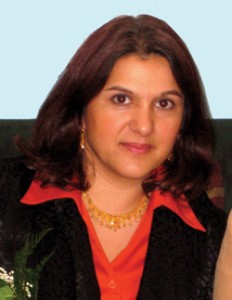
Indira Prasht
THIS year more people than ever are expected to attend the popular Khalsa Day Parade organized by Dashmesh Darbar Gurdwara in Surrey, the largest of its kind in North America, on April 19.
This could be explained in part by the fact that it is the thirtieth anniversary of Operation Blue Star, when the Indian Army stormed the [Darbar Sahib] in Amritsar, Punjab. For this reason as well, one can expect a special float commemorating 1984.
While the Khalsa Day parade has often sparked controversy because of pictures of “martyrs” which many Sikhs and the event’s organizers believe should be remembered as part of Sikh history, it seems that people have realized that often this negative portrayal of the event has led to widespread misperception which has unfairly stigmatized the Sikh community.
Many now have a better understanding of the purpose and meaning of the images and as such are not allowing the advocacy for Khalistan (a homeland for Sikhs) and remembrance of “martyrs” to deflect from the celebration at the Khalsa Day Parade.
Tens of thousands participated in the Vaisakhi Nagar Kirtan organized by Vancouver’s Khalsa Diwan Society last Saturday. Photo by Chandra Bodalia
I spoke to Dashmesh Darbar Gurdwara President Gian Singh Gill and Satinder Pal Singh Gill, long time gurdwara committee member, to shed light on this issue.
While some people are saying that politics should be left out of the Nagar Kirtan (parade), Gian Singh Gill told me that what has transpired in the last 30 years with Operation Blue Star, the November 1984 Sikh Genocide and the events that followed, every Sikh family is affected in some way, and so they want to secure their future.
He said: “This is not politics, this is our future. All the political people from India want to express their separate political messages because they want to capture power. What we need is to secure our future. Whenever innocent people are killed, the beauty of Sikh religion is that [Sikhs] are in the forefront to protect the innocent. We are a religious people, not politicians, and we have religious festivals that show that.”
Gian Singh Gill
He added that the separatist or Khalistan movement remains an issue because the Sikh community fears for their future. As such, one can expect advocacy for Khalistan to be present at the Khalsa Day Parade. In fact, he noted, support for a separatist movement is stronger than ever before because Sikhs realize they need their own country. He added: “Especially now in Punjab, so many people are able to learn about their history and what is happening now through the Internet and phone.”
Satinder Pal Singh Gill
WHEN I asked Satinder Pal Singh Gill about why advocacy for Khalistan is important at the Khalsa Day Parade, he told me that he feels the public, especially Sikh youth, need to know the struggles to preserve their faith and the current conditions that make this increasingly more difficult. He is concerned that Sikhs are moving away from it.
He said: “People should be a Sikh first, but Sikhs and the youth run away from Sikhi. If you are not committed to the religion then you can do nothing for the nation. That is the big problem now.”
The Khalistan movement could be perceived to be controversial because some advocate extreme measures to achieve their goals and this is further distorted by media sensationalism. However, others would argue that what is controversial is the lack of freedom to openly express diverse views about Khalistan without being branded a terrorist.
At last week’s press conference on the Khalsa Day Parade, I asked Surrey RCMP Inspector Garry Begg whether advocacy for a Sikh homeland Khalistan is legal and he said: “Yes, provided that it does not advocate violence.”
While the abovementioned issues have impacted on the optics of the Khalsa Day Parade, there are many other aspects of the parade that people value and look forward to. For one, it provides an opportunity for the Sikh community to invite the mainstream community to participate and actually get a glimpse of what the Sikh religion is all about instead of relying on stereotypes to form their impressions.
Many students have been concerned about how Sikhism is being represented and feel that the beauty of Sikhism gets eclipsed from the media representations. At the parade, there are often booklets and information about Sikhism that can educate the public and Sikh youth about Sikhism.
Also, the fact remains that the main float will always be the one carrying the Guru Granth Sahib with its splendour and beautiful decor.
Many families look forward to doing seva by giving out food that they have especially prepared for this joyous occasion. For me personally, the Vaisakhi parade evokes a true feeling of inclusion. When you attend the parade with an open heart and mind, you truly feel the joy and the sincere desire of giving back to the community. It is an experience that has also captured the hearts of my two children over the years, watching families cooking and spending days beforehand to prepare for Khalsa Day.
In closing, Gill added that negative constructions should not deflect from the true spirit of Vaisakhi and instead we should remember and celebrate the birth of the Khalsa.
He noted: “Vaiskahi, is a very important day especially for Punjab and for Sikhs. … The legend and sacrifices made by the tenth Guru, Gobind Singh, who created the Panth Khalsa (the Order of the Pure Ones) should always be remembered. It is a very important day, especially for humanity.”
by INDIRA PRAHST
Sociologist, Vancouver.
